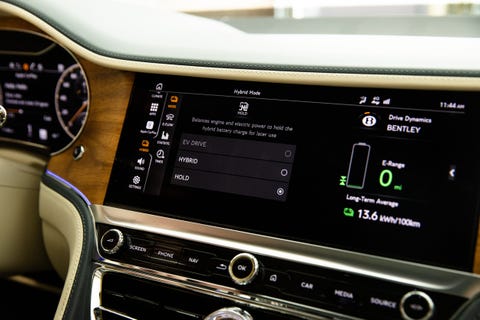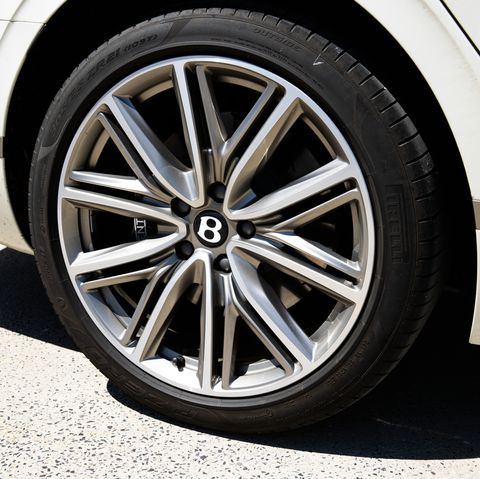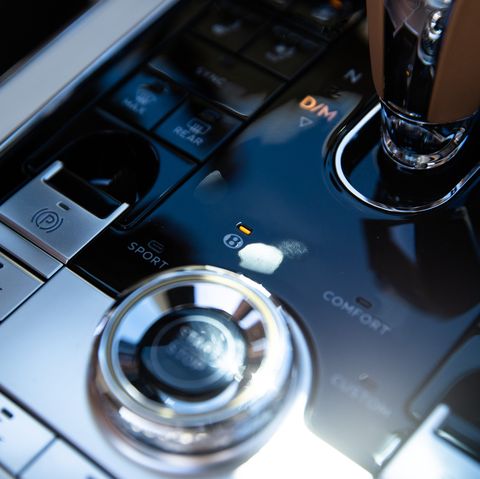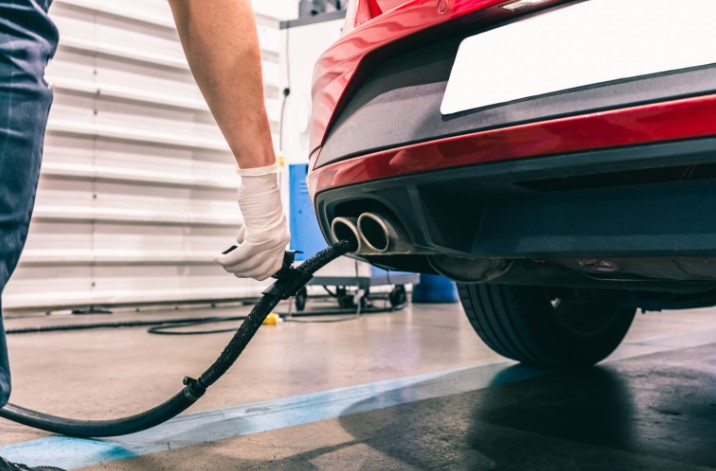2022 Bentley Flying Spur Hybrid
Bentley’s Flying Spur Hybrid is another one of the brand’s steps toward electrifying its lineup by 2030. It started with the Bentley Bentayga Hybrid in 2021, which was then followed by this Flying Spur Hybrid. If the British automaker’s statement of intent is anything to go by, we also expect the Continental GT coupe and convertible to follow suit with plug-in hybrid and electric variants. Bentley also announced that it will release a fifth new model before 2030.
But the brand known for making luxury cars has some special considerations to take into account, namely keeping the cabin noise down and the ride smooth. And they put some impressive engineering toward addressing those in the Flying Spur. Here’s how they did it.
Stepping-Stone Hybrid Powertrain
Bentley’s all-new hybrid V6 powertrain is a bit of a departure from the norm; unlike the more shock-and-awe V8 and W12 configurations that are available, the V6 hybrid turns gasoline into silence. The luxury British automaker is still proud of the increases in efficiency—20 mpg (combined) compared to 17.5 in the V8—but also made a point to mention the advantages in terms of quietness. “From the outset, we said this was going to be one of the most refined Bentleys ever made,” says John O’ Sullivan, Functional Manager of Chassis NVH & Structural Dynamics at Bentley Motors. Powered by a 18-kWh lithium-ion battery, the hybrid system can propel the vehicle for just above 24 miles when in all-electric mode.
Under just electric power, the hybrid system can supply up to 134 horsepower and 295 lb-ft of torque. As it’s a proper hybrid, when the e-motor and internal combustion are working together, they can slingshot the Flying Spur to 60 mph in just 4.1 seconds—eventually propelling the 5,600-pound beast up to 177 mph. This is also made possible by the vehicle’s all-wheel-drive system. While the new engine remains spritely, it does present unique challenges when it comes to interior acoustics.
Noise Isolation
The Flying Spur Hybrid is 50 percent quieter at 50 mph compared to the V8 thanks to its all-electric drive mode. “We’ve omitted one of the major sound sources, which helps, but then of course other noises become apparent,” says O’ Sullivan. One of the loudest is the whir of the electric motor; these noises are different from the grumble of an internal combustion because they’re much higher frequency—which Bentley’s engineers say can be annoying.
There are actually two different types of noise that need to be minimized: those that come through the structure of the car and those that come through the air. In cutting down the amount of sound the vehicle produces, Bentley strategically fitted the Flying Spur Hybrid with sound-deadening material to dampen the “bad” noises, employing everything from foam all the way to a thick fleece. O’ Sullivan mentioned that they had to be strategic with where they placed these materials to avoid over-engineering the car and adding too much weight.
That’s all well and good, but you have to find noises to eliminate them. O’ Sullivan says this starts with computer simulation software that can predict where noise might come from. Once the computer models have delivered, the engineering team needs to complete a regimen of noise tests to validate that data. This testing is all completed in an anechoic chamber, which isolates all other background noises outside of the car. Interestingly, the engineering team also mentioned that the respective cockpits of the V8 and W12 models are “tuned” differently to the V6 Hybrid. That’s because the V8 and W12 powertrains are not only louder than the V6 hybrid, they also present a much lower frequency sound.
Dynamic Ride-Height Control
The luxury driving experience is often all about disconnecting the driver from the road ahead. Along with the worry that a small bump might knock your glass of Möet & Chandon out of your hand, these slight jolts are generally just uncomfortable. Some vehicles (including the Lincoln Aviator we drove last year) use a system of cameras that scan the road ahead. However, other automobiles—like this Flying Spur—have accelerometers in the suspension to detect bumps as they’re rolling over them. In fact, it only takes the vehicle 10 milliseconds to react to a bump and independently adjust the suspension settings at all four corners accordingly. Case in point: If it detects a wheel going over a bump, it can soften the spring rate to cope.
The suspension system can also actively adjust the ride height. O’ Sullivan says that most road cars will lift at the front end during high-speed driving, which leads to instability—all because the front wheels are being lifted off the ground by the force of the air. However, as the Flying Spur speeds up, it lowers the front to counteract this, keeping you planted and maintaining efficiency.
Now that you know the suspension can automatically react so rapidly, you might be curious how exactly it does so. This is all made possible thanks to the fact that the Flying Spur uses air suspension. This means that instead of a set of springs and dampers, it uses what’s essentially an air bladder to control the ride of the car. Valves inside of the shock can increase or decrease the amount of air inside. This is how the vehicle can change the spring rate, damping, and ride height on the fly.
The Upshot
Bentley’s Flying Spur Hybrid is the last word when it comes to luxury. Thanks to the innovative hybrid powertrain, noise deadening, and suspension, it’s a vehicle that’s quiet, comfortable, and surprisingly fast. All that engineering comes at a price: $200,825. But you’d be hard-pressed to find anything more opulent, comfortable, and relaxing.
This content is created and maintained by a third party, and imported onto this page to help users provide their email addresses. You may be able to find more information about this and similar content at piano.io














